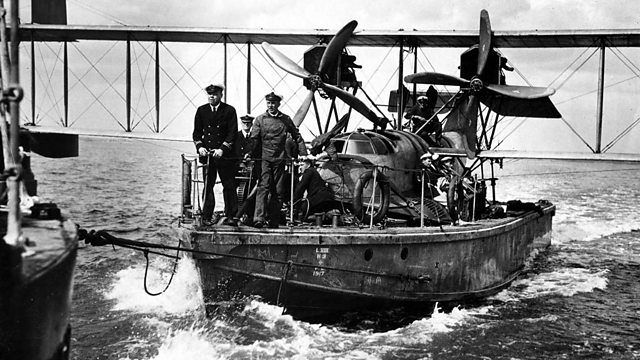Fleet Air Arm Museum, Somerset: Introducing Naval Aviation
Encouraging naval officers to fly when aviation by sea seemed an innovation too far
A loud, metallic clang echoes around the vast hall, where one of the finest reserve collections of naval hardware in the world sits in semi-darkness. There are rotor-blades to the left, a fuselage to the right and engine parts at every turn. To the untrained eye this looks like a graveyard for old aeroplanes and helicopters. But one end of this cavernous building is dominated by something which definitely isnβt meant to fly.
The distinctive shape of the bow clearly marks this out as ocean-going transport but its battered and rusting hull would raise doubts about its sea-worthiness among even the most dare-devil of sailors. Nevertheless this is Dave Morris, the Fleet Air Arm Museumβs chief engineerβs, pride and joy. Heβs leading the restoration of what is argued to be the worldβs first aircraft carrier.
Debate continues about the true origins of the term but the Thornycroft Seaplane Lighter H21 is certainly the first purpose built aircraft-carrying vessel. And thatβs good enough for the Director of the Museum, Graham Mottram. He can clearly recall hearing that the Lighter had been found: βIt was a bit like somebody coming round to King Arthur and saying βhey do you know the Holy Grail is in the second hand shop round the corner?ββ
The Royal Navy was known as the βSenior Serviceβ but in the first years of the 20th Century the Admiralty could stand accused of lagging behind in the race to inspire and innovate. Early American attempts at launching planes at sea had taken place as early as 1910, and had been largely ignored by British Naval Officers. But by the early years of World War One they had caught up and were leading the world in developing aviation at sea.
Planes had been launched successfully from platforms mounted on gun turrets aboard warships. The Seaplane Lighter was an extension of that idea. The vessel was originally designed simply as a way of transporting flying boats. Then it was realised that with the addition of a wooden deck, the ship could be towed at speed by a frigate or a destroyer in to the wind and a bi-plane launched from it. It was a precarious manoeuvre not unlike flying a kite.
There was, of course, the vexed question of what happened when the aircraft came back. With no way of landing on such a short deck the answer was rudimentary; the pilot simply ditched his plane into the sea as close to the ship as possible.
The hull of the Seaplane Lighter had been used as a floating barge on the River Thames near Hampton Court Palace throughout the 1960s and β70s. By the time its significance had been recognised, time had taken its toll. It lay rotting and unloved.
That is until it was lifted by crane from the mud and taken by road to the Museum at RNAS Yeovilton. Painstaking care and attention has been lavished on it ever since.
Location: Fleet Air Arm Museum, Heathcote Road, Somerset BA22 8HW
Image shows the seaplane lighter under tow
Photograph courtesy of Fleet Air Arm Museum
Presented by Graham Mottram
Duration:
This clip is from
Featured in...
![]()
ΒιΆΉΤΌΕΔ Somerset—World War One At ΒιΆΉΤΌΕΔ
Places in Somerset that tell a story of World War One
![]()
War in the Air—World War One At ΒιΆΉΤΌΕΔ
Zeppelin raids and aviation heroics
More clips from World War One At ΒιΆΉΤΌΕΔ
-
![]()
The loss of HMY Iolaire
Duration: 18:52
-
![]()
Scotland, Slamannan and the Argylls
Duration: 07:55
-
![]()
Scotland Museum of Edinburgh mourning dress
Duration: 06:17
-
![]()
Scotland Montrose 'GI Brides'
Duration: 06:41







